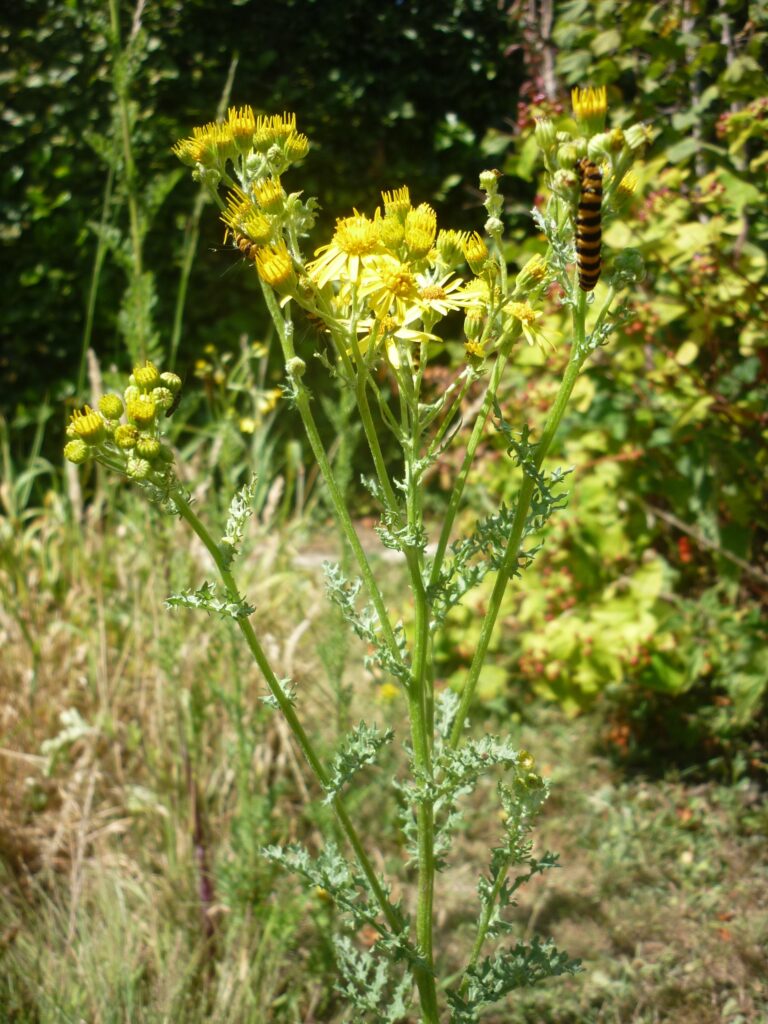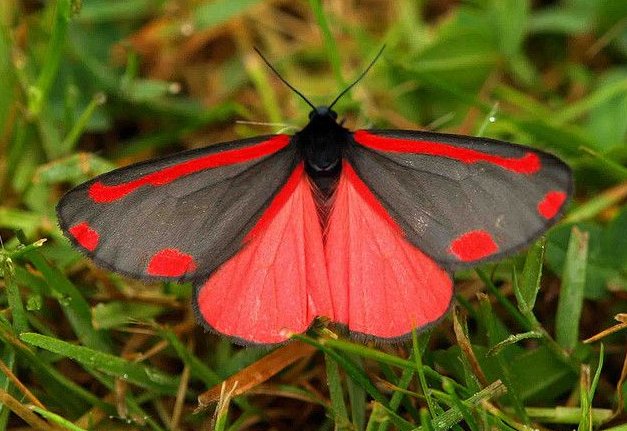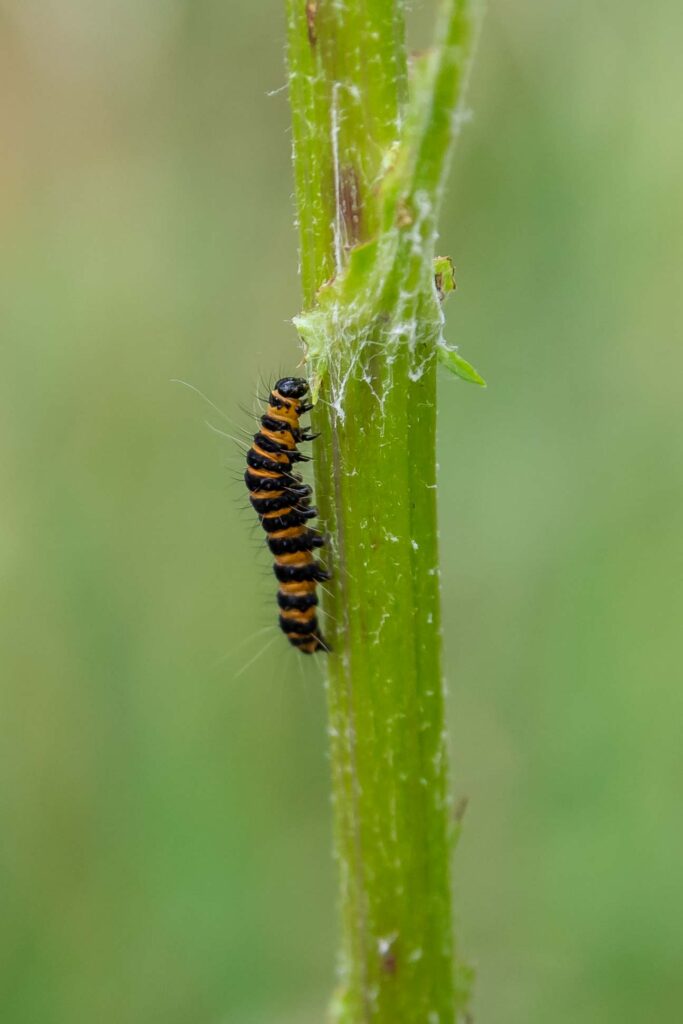| Landscape Architecture
Cinnabar in my garden
A patch of my rewilded garden has some ragwort plants on which I noticed today some cinnabar moth caterpillars feeding. The bold yellow and black stripes are a survival strategy. Cinnabar moth caterpillars use aposematic coloration, which is nature’s way of saying “do not eat me” in high-contrast colours.

These caterpillars feed almost exclusively on ragwort, a plant that contains toxic alkaloids. They store those toxins in their bodies, making them poisonous or at least extremely unpleasant to predators like birds. The stripes act as a visual warning, helping predators remember to steer clear after an unfortunate nibble.
Cinnabar is another name for mercury sulphide, which has a brick red colour like the colour of the moth (see below). Perhaps I’ll get to see some later in the summer. We should appreciate moths as much as butterflies. Bob Moore

Tyria jacobaeae = the moth; Senecio jacobaea = ragwort; jacobaea comes from the traditional name for the plant: St James-wort


